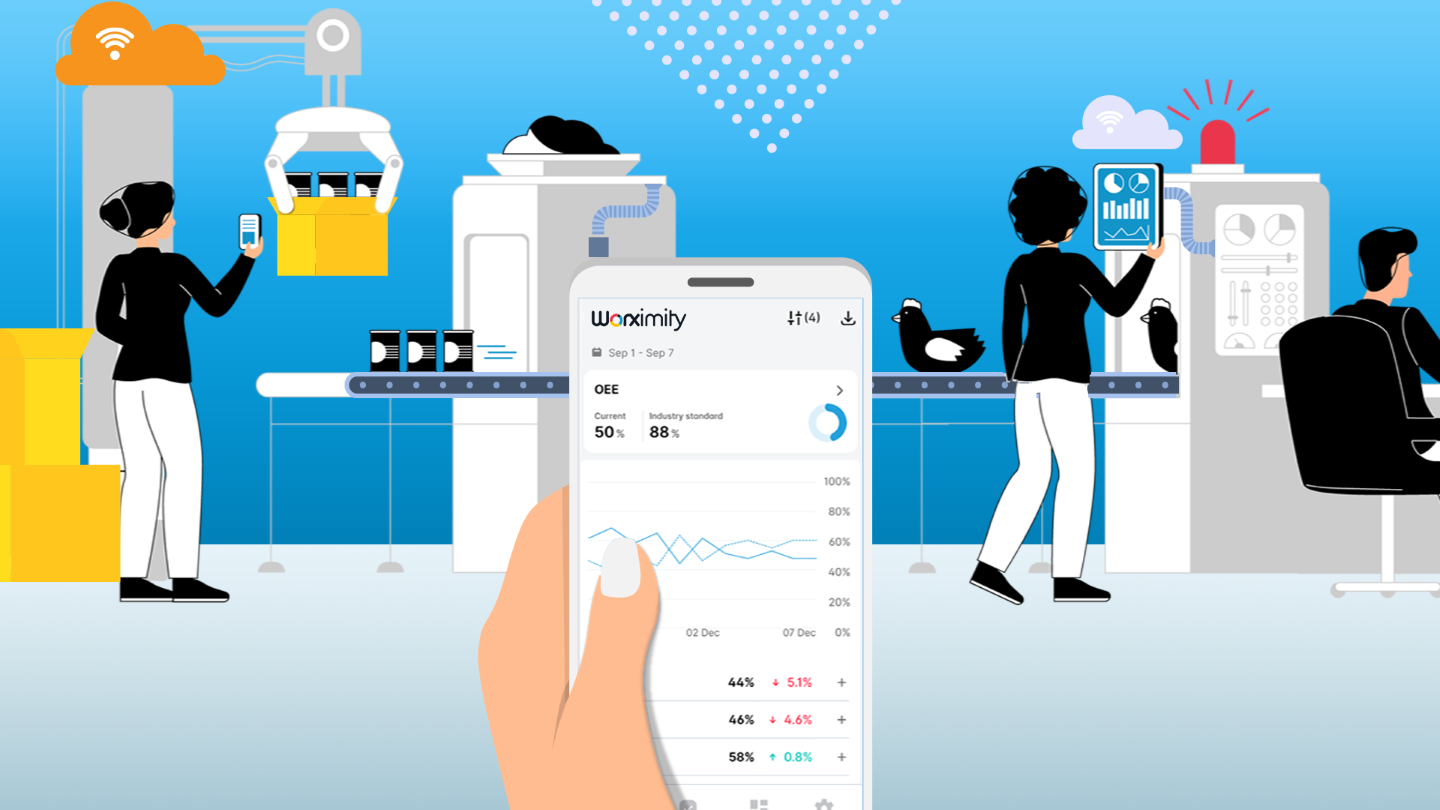Traditional methods of production and manufacturing are quickly being replaced by a new method through which the latest advances in information technology, automation, and controls are brought together and integrated into a single system to direct and control entire supply chains and factories. This transitional period is referred to as Industry 4.0 or the fourth industrial revolution.
Industry 4.0 offers a synergy among all elements along a process chain to drive improvements in productivity, quality, and order fulfillment. Further, benefits can be achieved globally or at any point along the process. For example, retail-level cash register sales figures can be used to project consumer demand, optimize production schedules, or control raw material inventories.
A 2019 McKinsey and Company report showed Industry 4.0 benefits for an industrial equipment manufacturer amounted to 30 percent efficiency increases along with “a reduction in subassembly WIP time from three days to four hours.” In another case cited in the report, a machining operation using Industry 4.0 concepts achieved 80 percent OEE scores. McKinsey reported similar benefits across many industry categories.
Applying Industry 4.0 to the Food Industry
Implementing Industry 4.0 is a major step toward building the factory of the future. To successfully implement Industry 4.0, however, the following three success factors must be in place:
- Availability of wide area networks with sufficient computational power to amass and manage large amounts of operating data
- The data gathered must be reliable, accurate, and available in real time. Processing includes vertical data consolidation and horizontal data accumulation.
- Integration of all processes along the supply chain
- Analytics to interpret data, support human-machine interfaces, and produce results upon which real-time, data-based decisions can be made
An implemented Industry 4.0 system begins at the raw materials sources and ends at the point of sale to the ultimate consumer. The concept creates an “umbrella” management system that links every step in the value chain, from harvesting food to placing a consumer item in the grocery bag or on the restaurant table.
The vision for a comprehensive food manufacturing data management system is still in its infancy, but some processors are moving ahead with implementations. The concept is projected to bring significant changes to the food and beverage industry, including increased efficiencies, faster time to market, improved quality, and reduced inventory investment.
Industry 4.0 Impact on Food and Beverage Manufacturing
Implementation of Industry 4.0 is transforming the growth, processes, and operating principles of food and beverage manufacturers in many important ways. Below are some fundamental changes that can be expected.
- Data from every step in the supply chain will be digitally analyzed and integrated to produce real-time outputs that will drive improved decision-making.
- Business decisions will become more complex because of the integration and analysis of multiple process steps. Both managers and line employees will need new skills to ensure data results are successfully leveraged.
- Increasingly, automation will drive production scheduling, inventory management, maintenance planning, order fulfillment, equipment operations, machine learning, and robotics. An integrated system will utilize touch-screen operations, cobots, and augmented reality.
- Decision-making in an Industry 4.0 environment will require managers and operators to develop new and higher-level skill sets.
- Supportive activities will also see changes. For example, cybersecurity requirements will increase, as will staff recruiting, training, and retaining.
- While equipment downtime will be reduced, the costs of downtime will increase because of the integrated nature of all process steps and more complex maintenance requirements. This means companies must develop faster maintenance response times and expanded employee electronics and computational skills.
Worximity Is Leading the Way in Industry 4.0 Transformations
The adoption of Industry 4.0 (IIoT) is only just beginning. For companies interested in implementing IIoT, it makes sense to start with systems that are integral to an Industry 4.0 solution and are immediately productive. Worximity's Smart Factory analytics software is quick to install, easy to operate, and inexpensive, and it generates immediate near-term benefits such as increases in productivity. Additionally, the cloud-based system serves as a foundational building block for future integration of additional Industry 4.0 components.
Worximity Technology's systems use data collection sensors (TileConnect sensors) attached to machines that gather and send performance and productivity data to the cloud in real time. Then, our Smart Factory analytics software analyzes the data for continuous improvement monitoring. OEE values and other KPIs are also calculated. Performance results are displayed on dashboards (TileBoards) placed throughout the factory, where employees monitor the results and immediately react to changes in the data.
Within the food and beverage industry, Industry 4.0 is in its infancy. For aggressive companies seeking to reap the benefits of these technological advances, Worximity’s Smart Factory analytics is a logical first step. Contact Worximity today to request a demo or to discuss a low-cost trial.







